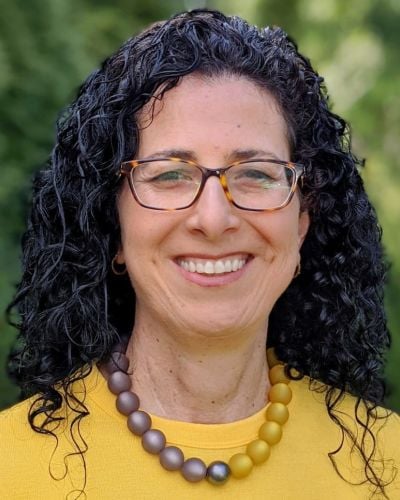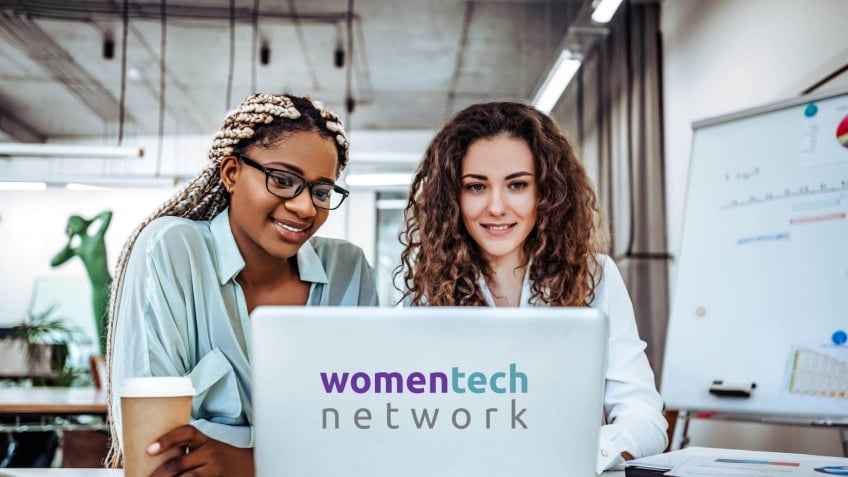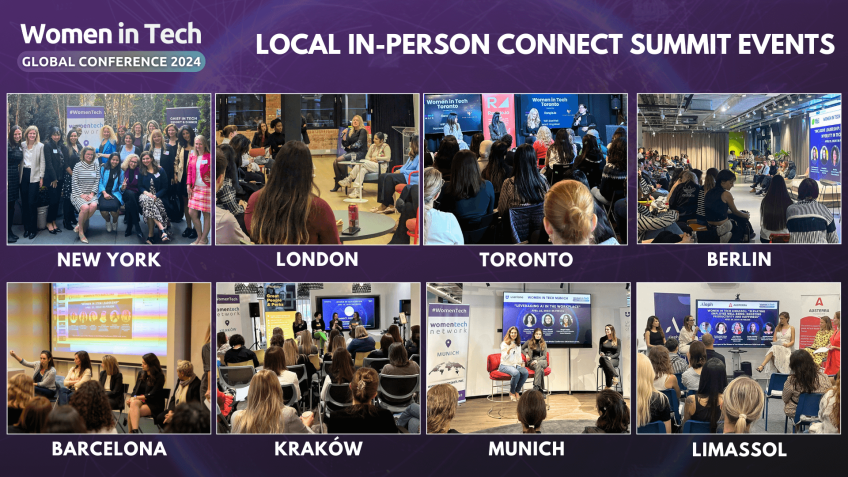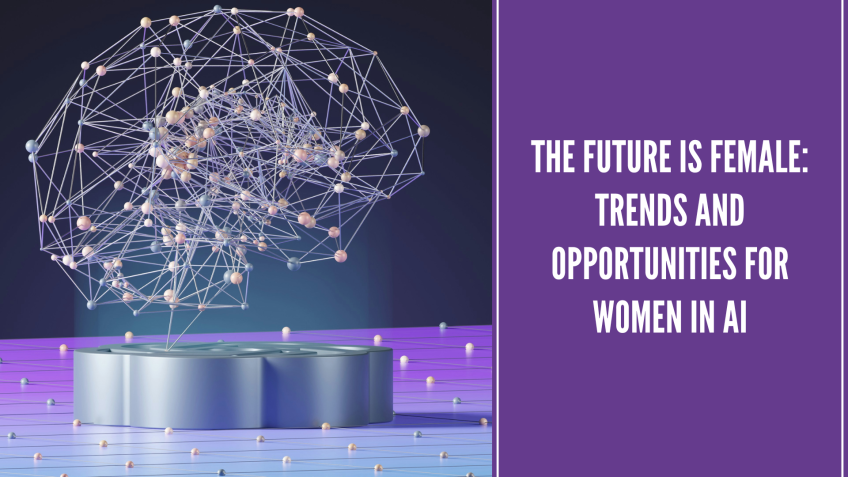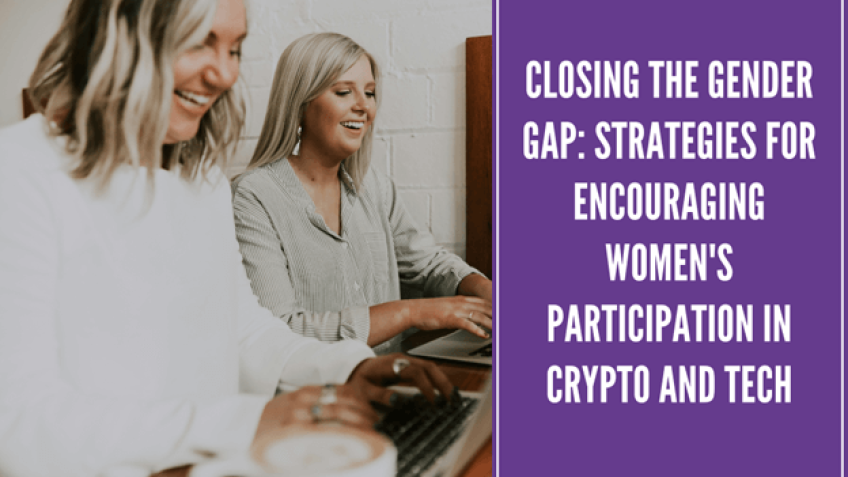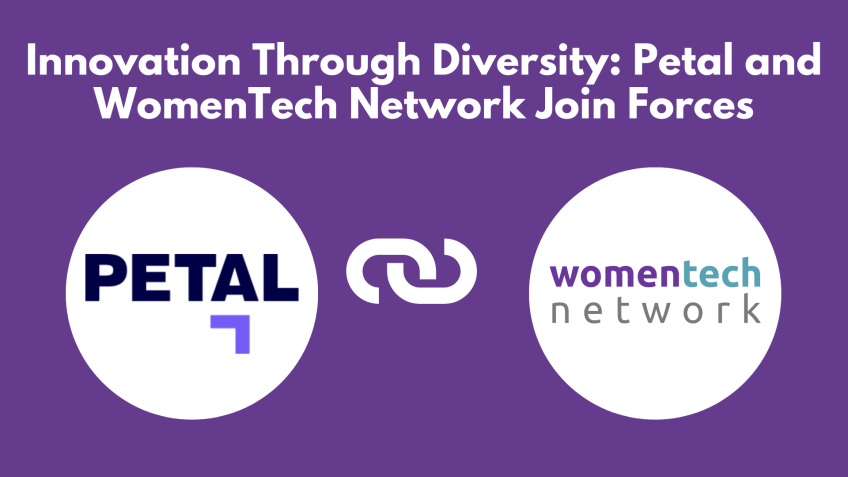Giving women a Voice. How to build a Grassroot Women@ Employee Resource Group (ERG)
Ronit Bohrer Hillel
VP of Engineering/Career CoachBeing a Woman in Tech and Building Grassroot Communities
Hello, everyone! I'm Roni Boel, a product engineering leader and a career coach. In this blog post, I'll be sharing insights from my nine-year journey in supporting women in technology and building grass-root communities.
The Sense of Duty as an Underrepresented Employee
During my early career in a tech company in the U.S., I was often involved in diversity initiatives. However, I found that this time and contribution were rarely recognized or rewarded. This experience prompted me to ask a crucial question: What is the role of an employee from a minority group in improving the diversity and inclusion within an organization? I believe that we should consider the power of grassroots communities as a viable solution.
Employee Resource Groups (ERGs)
Let's start by defining what an Employee Resource Group (ERG) is. ERGs are organized communities within an organization, typically led by employees sharing common characteristics. They serve as a platform for employees to create an inclusive work environment.
Benefits of ERGs
From an Employee Perspective:
- Support and Belonging: ERGs offer spaces for connection, shared experiences, mutual interests and provide a sense of support and belonging.
- Recognizing Talent: They help identify emerging talents that may otherwise be overlooked due to unconscious bias.
- Leadership Opportunity: Irrespective of their current job roles, ERGs provide opportunities for employees to become leaders.
- Information Resource: ERGs can provide valuable information to combat biases and support the group within the organization.
From an Employer Perspective:
- Better Business Outcome: Companies with strong women representation are 25% more likely to outperform.
- Increased Engagement: Companie with higher engagement have 21% higher profitability.
- Valuable Feedback: ERGs provide crucial feedback, allowing the company to improve its diversity and inclusion efforts.
Starting an ERG can occur through a grassroots community or it can be initiated by the company.
Turning Grassroots Communities Into ERGs
When transitioning from a grassroots community to a formal ERG, community leaders must establish a formal relation with the company, define the purpose and mission, clarify communication and schedule, establish company support through leadership and budget and create a leadership structure within the ERG.
The Challenges and Successful Transition of Grassroot Communities to ERGs
However, migrating from a grassroot community to a formal ERG can be overwhelming. To prevent this, it's recommended to pace the transition by defining what needs to be done first and then gradually introducing subsequent steps to ensure the community's momentum isn't lost.
Concluding Thoughts
There is power in number and unity, and ERGs can offer significant benefits for both employees and employers. They can increase diversity, inclusion, engagement, and improve the company's business outcome. When ERGs are born from communities, employees feel a sense of ownership and unity that makes them stronger within their company. We can all make a positive impact in our organizations and communities.
In my personal journey, the proudest moment was seeing the community growing independently, becoming inclusive and even making a difference in high-level company decision. Remember, don't rush the process, and support each other in building strong, impactful ERGs.
If you have any questions or insights about ERGs and diversity initiatives, feel free to share them in the comments!
Video Transcription
Let me know when I should start. I don't see the participant. OK, welcome. My name is Roni Boel and I'm a product engineering leader and a career coach.I'm really excited to be with you today and I wanted to take you today through my nine years voyage and journey to support women in technology and de I hopefully inspire you a bit and give you some tools to uh see how you can build powerful grassroot communities. My, when I first started working in a tech company in the U SI was invited to attend the diversity off site with all the VPs in the organization. I was extremely flattered as a new employee that was an opportunity to be with leadership on kind of a very intense couple of days. However, I soon realized that it wasn't actually the, that I got a lot of value. It was actually the other way around. The leadership was getting a lot of value. The leadership was spending time with the most senior underrepresented minorities in the organization and was helping them steer the E I in the organization. And they also saw it as our job to contribute to the effort to increase diversity.
During my first four years in the company, I found myself initiating participating, leading, contributing in so many ways to deis. And so at peak, I spend about 30 to 40% of my time as an engineering manager in DE I activities. Unfortunately, my managers rarely recognized or accepted or even rewarded me for that time. They believed it was my obligation as a woman in tech to improve de I for the organization. And I I should just do it. So ask yourself, what is your sense of duty as an employee from a minority group? What is our role in improving the E I uh within the organization? Is it fair for the organization to expect us to contribute in this way? And how do employee resource group er GS factor into this effort? It's all great questions to ask herself in the Great Islands. So let's start with defining what is an employee resource group? Uh er G are organized community within an organization that are typically led and comprised by employee who share a common characteristic. It can be about gender, ethnicity, religion, lifestyle interests. It could be many different things. As long as they connect a group together, these groups are established to provide support and create a safe place for employees from that community. Eg also serve as a platform for allies who wish to support that their colleagues and be actively involved in creating an inclusive work. Environment.
So that's kind of what is an energy. Now, let's think about it from an employee perspective. First, let's put our employee ahead. What's the value gives us? We touched a little bit into that. So eg provide us a space that we can connect with others like us, right? We can identify, we'll have maybe mutual interest, uh interest, we can share experiences, we can lean on folks like us and it create a feeling of support that we have a support system and a sense of belongings eg can also help identify maybe merging talent that by other means where two junior or, or maybe some unconscious bias would have pushed them aside.
But in the, in that safe place, they have that place to shine, it can provide opportunities for employees to become leaders regardless of who they are in their job. And because the community usually comprise of multiple people in different level in the organization, it can actually give them a real opportunity and then it could become this source of information. A lot of our biases come from ignorance and having a source of information that can provide data and uh real uh uh reliable information about that group can actually be very powerful and, and, and help support that group within the organization. So we understand what it is for us as employees, but why would employers companies, what, what's their interest in er GS? So we know that diversity is good and I'll share my uh hint of data about that. Companies with strong women representation are 25% more likely to be uh outperforming. Hence, if you make sure that you have a diverse course in the organization, you probably have better success in your own business outcome. But the other interesting part that er G also bring, it's not just that they create that group that improve diversity and it create that inclusion feeling because company with higher engagement in the workforce have 21% higher profitability.
And those er GS create that engagement, they make uh the employees feel better, feel more included, feel supported, feel belong, feel they have a voice and that empowers them to outperform in at work and support the company's business goal. They also create this valuable place where the company could learn and ha get feedback about what it's doing good or not good in terms of pe I and that is a very powerful tool for the company to to be connected to minority groups. So where do we start? When I left? Uh my first company here in the U SI moved to smart. My next one, I was determined to start doing things only when the company would be ready. And the reason for that was not my lack of sense of duty or my desire not to support my community was actually because I found that there is a huge amount of power when the organization and leader in the organization are fully committed. And when the right time came, it took about a year. I am amazing. Uh Colleagues of mine decided to build a community, women in tech community within small cheap. And there are two ways to start. Uh when you think about a community, it's a community. What's the relation to an energy, how it become an energy? So when you think about an er G you can start exactly like that. Those grassroots bottom up from a community that will later grow, what we will learn is an energy or it could come from top down.
A company can decide, hey, we wanna encourage our um uh underrepresented priorities. My, our affinity groups, we want to allow them to connect. We're gonna give them support and budget and everything they need from start. We're gonna ask for in volunteers in those groups to actually build that up. I want to talk about those but up those grassroot created communities because I think they are much more powerful. So let's see how you do that. When we started, our goal was to build a community. In our case, a community for women in tech within the company, it would be that place that support that nurture creates this safe place for women in the company. We started by uh declaring that we are building that and that we are inviting anyone to join. We were very inclusive. Anyone could actually join. We build two critical elements. One is that communication channel so people could hear, could talk and can start forming a community uh offline as well, not just in event. And then this consistent activity actually meet ups and, and, and events that occur. We extended that to tailor to the community need and involve more people to volunteer. We actually, our dream was I was a senior director at the time. Our and my peers were directors as well.
And our dream was that anyone in any level, regardless of who they are in, that women in tech community can go and in so we encourage people to volunteer. Uh We supported them where they needed. We took one step further and invited allies, people that really cared about this to join us and they were coming and we started to have this huge event with many people uh from a variety of of groups coming. Our third step was to invite the organization need our leadership to do collaboration. So we collaborated, for example, on the Human History Month at this time. And then the last step before we became an er G was actually to take part in formalizing what should be those employee resource group within the company. And after that, we made that jump and became an eog. So what makes the energy different from just the community? Right? The answer is that this is a this is a time when the community creates formality and governance and the company become a invested partner in that community. So there is a very strong part uh between uh very strong relation between the community and the company. So now we grew up becoming from a community and energy and I wanted to share with you what does it mean that maturity, that level of governance that created? First, we clarified the purpose and mission.
At that time, we were women in tech uh and, and gender minority and allies. We had this very long name comprised of all of that together, we clarified and said, hey, there are several er GS, we are going to focus on women and that's, that's our goal uh for that. Er G uh and we knew that the other parts are supported in the right way. So we clarified that we established that company relation. We got the executive sponsors, we got leadership, supporting DE I leadership as well, supporting. So both the company leadership in general and the DE I leadership uh supporting, we created formal leadership if any one of you have been in PTS a very similar, we appointed chairs and co chairs, director for different parts. Uh And so we, we have uh communities around the world. So they, they were directors that lead in different parts of those communities and then we defined budget and that the company was uh willing to provide for that activity. Uh If in your community time, you have not yet established, how people become members or what is your uh kind of schedule for the year or how do you communicate?
That was the time that we actually clarified it and matured, especially the element of programming by the way, which became more mature. So this this is a good recipe now, you know how to build a formal energy. However, migrating from a grassroot community to a formal energy can be overwhelming everything uh at once happen. Uh and it can chip in and, and kind of uh fracture the structure of the community. This can lead the group to feel pressure and can burn it down. So don't let that stop your momentum. Don't let that need for governance and order kill the the beautiful community you already created to prevent this, save the transition, not everything needs to happen in the first time. So we find what needs to be done first. Yes, you do need to appoint a chair. This is the time where I, when I actually stepped down and I allowed and I allow the community to set up who's the the chair for for that er G. So that's an important step. Uh It's important to clarify your purpose, but then stop there and figure out what do I need next. I need activities. OK. Otherwise I wouldn't be able to engage with my community. So maybe point the program director and and come up with like 56 activities along the year or the next quarter activity don't get crazily carried away.
And then as things start settling down and you're keeping that momentum as a community and everybody engaged, then add the next the next step. There are more type of directors and more type of roles. And this is an amazing opportunity for people from the community to volunteer.
But take that time that you need remember not to rush the process. So it would not jeopardize the community that you have worked all of you so hard to create. There is a power number and a power in unity is a saying I heard from great leaders, er G can offer significant benefits for both employees and employers and they provide a power in number and a power in unity. Those can er GS can increase diversity, inclusion engagement and they can improve the company business outcome. So it's a win win when er GS are born from communities, employees feel a sense of ownership and a unity that makes them stronger within their company. It's their space.
We all have that opportunity to make a positive impact within our organization. Uh We can give community the voice by supporting them by helping create them by volunteering them. And if you think about your sense of duty for that might be that thing, you are not obligated. But if you wanna contribute, this is the way you can feel comfortable to do so and the community would benefit immensely. So thank you for so much for being and listening to me and I would love to answer any questions that anyone had. You're more than welcome to put them in the chat and just opening the chat we have about kind of five minutes. So thank you so much for the first question. I'll read it out. Would you mind giving some advice to recent graduates seeking an entry level data related position in today's job market because most of jobs are open to new position now. Thank you. Not very much related to an er G uh But uh definitely, you know, um I think the secret today is knowing people and community again. So even within graduate, you can uh reach out to communities that exist uh for, for you uh also community that are usually um one step forward in your career. So and those exists as well. Uh They are not, they are not officially within organization.
It is the other way around. They are actually there's tons of nonprofit organization that connect women in tech and when you start getting to know people that, that might be a good way uh for them to give you a chance. There are very, very few positions open but they are there and having connection and people recommendation is very extremely helpful. The other way around is doing those connections through some of those social networks as you can and so on. Good. Any any other questions that anybody had, anybody had an, an experience of building and taking part of a employee resource group through their time and have a positive or negative or a concern or question. OK. I can tell you that I've, every uh in the last nine years, I've seen so many evolutions of creating some type and form of community. Um And I don't know how many of you feel, all part of such, but when you have the opportunity uh to be part of it is really critical uh in that place to actually contribute and volunteer. Um And I'm putting that aside from your contribution to diversity and inclusion within the team that you're working in or the organization that work, you're working.
Those are two different things and you can separate them in your mind and decide what is right for you in each one of them. Yeah. Any other questions? OK. I can tell you one more thing that uh um I the one, the moment, the most uh happy moment for me, I call, it was the moment where I felt um the community became uh completely independent. And when I started the, the community, the women in tech smo, I was a senior director and I was, you know, they're not men. I, I was the most senior person uh from in tech. Later on, another person joined, that was more senior than me. But I didn't feel that uh I was the uh rep good representation of the voices around. I felt that I had the power to go and do, but I, but not necessarily representing the voices all around. And the happiest moment for me was a moment where I could say, hey, I can happily step down. And we had uh two more uh um early career, mid career women actually taking that lead and becoming the chairs uh of that community. And, and for me, that was that peak moment, it was also very challenging because that was the moment where we became form energy. And that was the moment where uh they needed to mostly um step into a very complicated role of government.
So they needed the support, they needed um executive support from around. But they, but the community became huge. It actually uh wider itself to contain all women at, at the company. And it had a very strong voice that it was even able to make a difference in high level company decision. So I was extremely proud that that happened. Cool. I think we are out of time for today and I wanted to thank you for being with me. Enjoy the rest of the conference.

